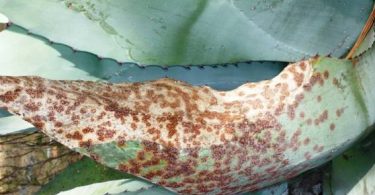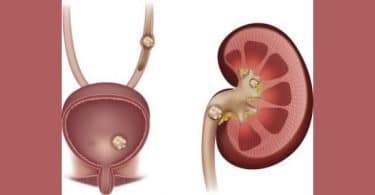On a couple of occasions, I had the good fortune of participating in Dr. Divya Chhabra’s workshops during Joint American Homeopathic Conference (JAHC), an annual event attended by homeopaths from the entire United States. While listening to her lectures and case presentations, I did feel that her method was working like a charm but I had many, many questions bubbling up in my mind. Intrigued by the uniqueness of Dr. Divya’s method, “Leap to the simillimum”, I asked if she welcomed observers at her clinic. To my joy, Dr. Divya extended a hearty invitation. “Do come and see with your own eyes how this method works” she said.
Taking Dr. Divya’s word as a sign from the universe, in December 2017, I committed to a two week participation in her clinic in Mumbai as an observer. I was visiting India and Mumbai after eleven years and my heart was fluttering with excitement, hope and eagerness for a rich and varied experience that India offers generously to her visitors and residents alike.
Dr. Divya’s clinic is in a bustling residential location, merely a few yards from the white sands of the famous Juhu beach. The first two weeks in December happened to be very mild, with just a hint of coolness in the air. On nice sunny days, I could smell the salty ocean breeze wafting in through the windows of the clinic on the 3rd floor. I settled in to my hotel as I arrived in Mumbai and then I went walking about to soak in the sights and the smells of the neighborhood. Little did I know that the rest of two weeks at Dr. Divya’s clinic will be an intense education for me in understanding the language of the sight, smell, sound, taste and touch that the patients would use to describe their inner landscape and drop a hint about the remedy they need.
From December 4 till 15, my daily routine is, at 8:00 am, bright-eyed and bushy-tailed, I walk along the beach, pay my respects to Lord Krishna at the nearby ISKON temple, and reach the clinic to find the assistant doctors already busy at work. The patient is ready. Dr. Divya arrives within next few minutes. Dinesh, the multi-tasking and very cheerful office manager, prepares chai and offers it to all of us, including the patient. As the aroma of the masala chai fills the consultation room, we all begin to settle in and relax. Chai is a great ice-breaker if you ever need one. By 9:00 am, case-taking session begins. A couple of other observers and I take turn for attending the case-taking session. We sit discreetly at a side table and take notes. The assistant doctor transcribes the session.
I am quite impressed to see how relaxed the patients become during case-taking – their shoulders are down as if they are disarmed, they lean back in their chair, their voices go soft and their eyes go dreamy as if they are in a state between wakefulness and sleep. They come with a long list of complaints, of course, but the way case-taking is conducted, they quickly dissociate themselves from their suffering. With Dr. Divya asking questions in her mellow, sweet voice, they are on a once-in-a-lifetime journey of inner exploration – a journey that can only be undertaken in a state between sleep and wakefulness.
The whirring of the air-conditioner and the fan, the clicking of the laptop keys, the voice of the patient, and of the doctor….everything blends in to a coherent, calm and soothing flow as the patients enter their unconscious mind.
In Dr. Divya’s unique method of case-taking, an exploration of the response of the five senses (sight, smell, sound, taste and touch) in the areas of chief complaint are done using five indicators as stepping stones: denial, corrections, absurdity, slip of tongue and unsaid words. The emerging data is confirmed in the areas of food, dreams and fears. With this line of inquiry, the patient drops hints about the remedy state all along and uses source words to describe the remedy clearly.
After case-taking and talking with the patients privately, Dr. Divya sends them away with their remedy.
Now comes the highlight of the day – the teaching moments! All observers and assistant doctors gather eagerly around Dr. Divya and she goes in to an in-depth analysis of the case. She explains every nuance, every answer the patients gave, what these answers revealed, how the clues were gathered and finally, in a systematic, logical, coherent and indisputable manner, she reveals the choice of the remedy. Being a superb teacher, she draws from the classic materia medica, from ancient homeopathic literature, from the repertories and ties it all neatly to the case and the chosen remedy. As they say, the proof is in the pudding…you do have to witness this unique style of case taking, leap to the simillimum, see how the remedy is chosen, see the patient coming back for a follow up and see how they are relieved of their suffering, are transformed and their inner richness is beginning to flow out. All along they had carried the remedy source in their unconscious …waiting to be discovered as they took the “Leap to the Simillimum” with Dr. Divya.
For further clarification and for the benefit of the readers of HPATHY, I asked Dr Divya if she could kindly offer a precise description of her method. This is what she said…
My method is yet another tool for finding simillimum. It is based on the fact that the disease state lies in the unconscious. If it were to remain in the conscious, it would no longer be a disease state. We would see it, control it and correct it. For example, our unhealthy behaviors patterns reside in the unconscious and we say we behave in a certain way because the tendency to do so is out of our control. A diabetic knows sugar is bad for him still he reaches for it and says he cannot control his craving for sugar. That is because this tendency resides in the unconscious mind.
Since symptoms arise from the unconscious, I honor the symptoms, and do not negate or minimize it. I honor the symptoms at the level of the unconscious, at the deepest level. The patient is experiencing symptoms and altered functions in his body and therefore he goes to the doctor to seek help. At the level of his chief complaint, his body is sending out signals seeking help. At this level, the unconscious will express itself by saying words that do not fit, make no sense, are totally out of the blue, are illogical and out of context. While blurting out these illogical words, the patient is actually speaking from his unconscious mind. He is leaping over a metaphorical wall …from the conscious to the realm of unconscious.
Freud and Jung have explained that the split between our conscious and unconscious is for our own protection. The conscious mind blocks the unconscious mind and its expressions. That is why the language of the unconscious makes no sense. But it is also true that our untapped potentials, the secret to our total wellbeing also resides in the unconscious. By pushing away the unconscious, we are pushing away our creativity. It is not surprising that very highly creative people are also described as crazy, for example, Picasso, Mozart and Beethoven. They create from their unconscious.
Since the disease state lies in the unconscious, finding a remedy at that level makes sure that you will be cured fully and your full potential will be expressed.
For exploring the unconscious, I go for the picture beyond the picture. The outer picture is the patient’s life, his story, how he appears to the world. This apparent and obvious presentation is maya, and illusion, as explained in the Indian philosophy. There is always a picture behind this picture and that is what I strive to uncover. I have used the free association method for this purpose for over fifteen years, and I got great results, but I realized, I was only reaching the human level of delusion. At that point, I felt that in every case, there is a point beyond the human delusion. I need to cross the conscious level and come to the unconscious. This is the development in my method that I describe as the leap to simillimum.
During case-taking, when the patient crosses over from the conscious to the unconscious, he begins to speak using words that are different from ones he uses to describe his thoughts, emotions and stories. He begins to speak the language of the five senses.
Our five senses – sight, smell, sound, taste and touch – are the doorways through which we interact and engage with the world around us. We are not conscious or aware of the process, but ever since birth, automatically, we have been gathering data from our interaction with the environment and this data is stored in the unconscious. As the patient begins drifting from the language of thoughts, emotions and stories, and enters the realm of the unconscious, I keep him focused in exploring his sensory response.
The language of the unconscious is the language of the five senses. How to recognize the words by which the unconscious is expressing itself? For this, I begin with the chief complaint. At the level of the chief complaint, patient notices that he is not functioning like he normally does. He is experiencing symptoms and he goes to a doctor seeking help. This means that at the level of chief complaint, the actual inner state of the patient is expressed.
In exploring the chief complaint, I pick up all the symptoms that the patient is experiencing. This is the anchor point. Here I ask the patient not what he thinks or feels about his complaints but I ask him about the response of his five senses to his complaints. Usually, a person will come complaining of pain in the knee and say, it hurts so bad, I have to limp and I look as if I am a cripple. I want to kill myself. I hate depending on people I feel so horrible when I see people who do not have any knee problems. Why am I different? Here, he is talking about his emotional reaction to his pain. He is conscious of his pain, how it makes him feel in himself and in comparison to others.
I leave the world of his emotions, delusions, awareness and comparison behind. I focus on the response of his five senses to the painful knee. I ask him how does your knee look, when you touch it, how does it feel to touch? For each of his complaints, I first understand what are the general symptoms and what are the symptoms peculiar and unique to a patient. The general symptoms are same for everyone. Strange, rare and peculiar symptoms are unique to the individual. At the level of these individual symptoms, the patient’s inner program is faltering and he cannot function normally. He will not improve if at this inner program is not rectified. Asking the patient about the response of his five senses to his strange, rare and peculiar symptoms ensures that I will be able to help at the totally individualized level of his core, inner program.
The unconscious and the five senses are all about storing data. The entire life, as we know it, is a constant battle between the conscious and the unconscious. These are two tracks in our life and anytime the unconscious projects itself, the conscious will try to subdue it. In terms of Hindu philosophy, it is the dharma of the conscious to block the unconscious so that we can function normally in the world. If you remain focused on the unconscious then you will miss out on the conscious part of the life. Between the conscious and unconscious, there is this metaphorical wall. Conscious is always trying to block the unconscious but occasionally, there is a weak spot in this wall. And through these weak spots, the unconscious will send out hints. Mostly, conscious mind does not know what to do with these hints.
The expression of the unconscious are known as slip of the tongue, absurdities, and unsaid words. Once slip of tongue, absurdities and unsaid words get expressed, the conscious attempts to deny and correct. To summarize, I focus on slip of the tongue, frank absurdities, unsaid words, denial and correction. These are my stepping stones. These words are originating from the disease state, from the unconscious, are unique to the patient and have been obtained while the patient was describing the response of his five senses to his strange, rare and peculiar symptoms.
To prevent the conscious mind from creating further blocks, I do not ask patient questions about slip of tongue, absurdities, unsaid word, denial and correction. If I do, his conscious mind will take over and prevent the unconscious from expressing itself.
After the chief complaint and the strange, rare and peculiar symptoms have been explored, and the five stepping stones have been gathered, I move to the area of food, fears and dreams. In these areas the conscious and unconscious can overlap. In these areas, I inquire about the response of five senses and again, I focus on slip of tongue, absurdities, unsaid words, denial and correction. This inquiry helps me leap over the metaphorical wall between the conscious and the unconscious.
With this method of exploring the unconscious, I have had great success in dealing with cases of young children, bulimia, celiac disease, anxiety, autism, ADHD and manic depressive states and postnatal depression. Particularly, in the area of mental health, the patient is already not being controlled and managed by his conscious. He is rather operating from the unconscious, so conscious is not able to create the metaphorical wall and block the expression of the unconscious. These cases are successfully treated by my method, because they are already on the other side of the wall and exhibiting the remedy state. With administration of an optimum remedy, these cases are restored to admirable level of normalcy and the patient experiences a great relief from his suffering, feels freedom in his life and shows a surge in creativity.
I cannot close this travelog without mentioning about the friendly, warm, amiable and positive atmosphere at the clinic. The Chief-Resident, Dr. Shraddha, is full of life and good humor. Her assistants, Dr. Khyati, Dr. Megha and Dr. Sneha are lovely individuals to be around and learn from. Beginning from Dr. Divya, the whole team is welcoming of observers, their knowledge and ignorance, their needs in the crowded city and together as a team, not only they helped us understand and make sense of a unique method in case-taking, but with shared jokes, homemade lunches and ample supply of masala chai and nutritious snacks, they turned our time in Dr. Divya’s clinic in to a memorable chapter in our life as homeopaths. Hopefully, I will return soon to study more with Dr. Divya and in the meantime, I can imagine that many of you readers would want to do the same.
For further insight in to Dr. Divya’s Leap to the Simillimum method, please read the interview in the link below.
https://hpathy.com/homeopathy-interviews/dr-divya-chhabra-interviewed-by-vatsala-sperling/






